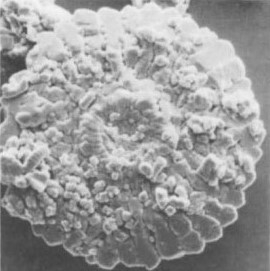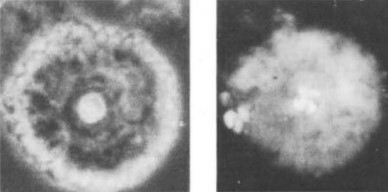Candeodiscoaster protomultiradiatus
Set number: 608
-
1
-
2
-
3
-
4
-
5
-
6
-
7
-
8
-
9
-
10
-
11
-
12
-
13
-
14
-
15
-
16
10µm
Set number: 607
-
1
-
2
-
3
-
4
-
5
-
6
-
7
-
8
-
9
-
10
-
11
-
12
-
13
-
14
-
15
-
16
10µm
Candodiscoaster protomultiradiatus Wei, 1998
Emended by Varol, 2023: Gigantic (12.0–18.0 μm) species of Candeodiscoaster comprising a non-birefringent disc and a narrow birefringent tube cycle proximally surrounded by an additional disjunct structure. The non-birefringent disc is made up of 30–40 segments joined along most of their length. The hollow disjunct proximal structure is smooth and non-birefringent in plan view. The proximal structure can be better seen in the side view (Plate 19, Figs. 1, 5, 13, 17 in Varol, 2023).
The optical properties of this species are the same as those of the genus.
Candeodiscoaster protomultiradiatus differs from Davidbukrya by having a hollow, disjunct proximal structure. Candeodiscoaster protomultiradiatus is distinguished from Discoaster bordii in having a hollow, disjunct proximal structure and a birefringent tube cycle. The latter species has a solid, disjunct proximal structure and lacks a tube cycle.
Howe, R.W. 2022. Candeodiscoaster, a new nannofossil genus (Coccolithophyceae, Discoasteraceae). NotulaeAlgarum 244: 1–2.
Wei, W. 1998. New calcareous nannofossil species and stratigraphic markers from the Upper Paleocene. Journal of Nannoplankton Research. 20(2): 107-115

